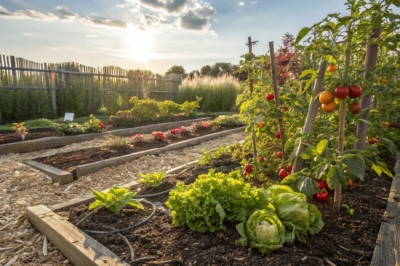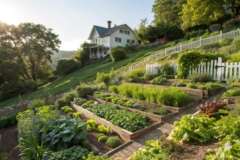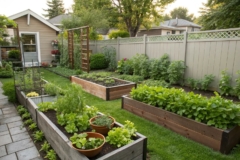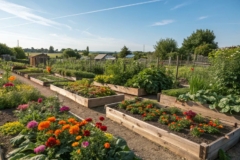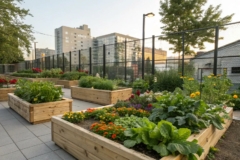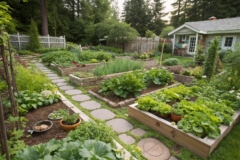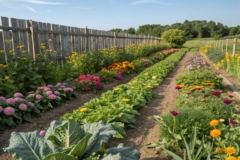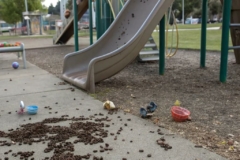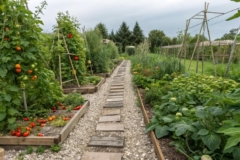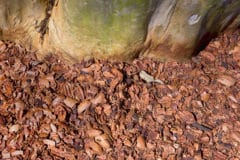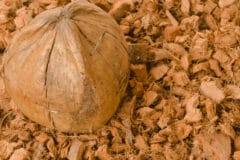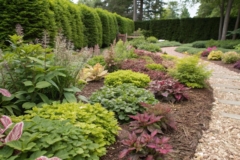1. Leafy Goodness
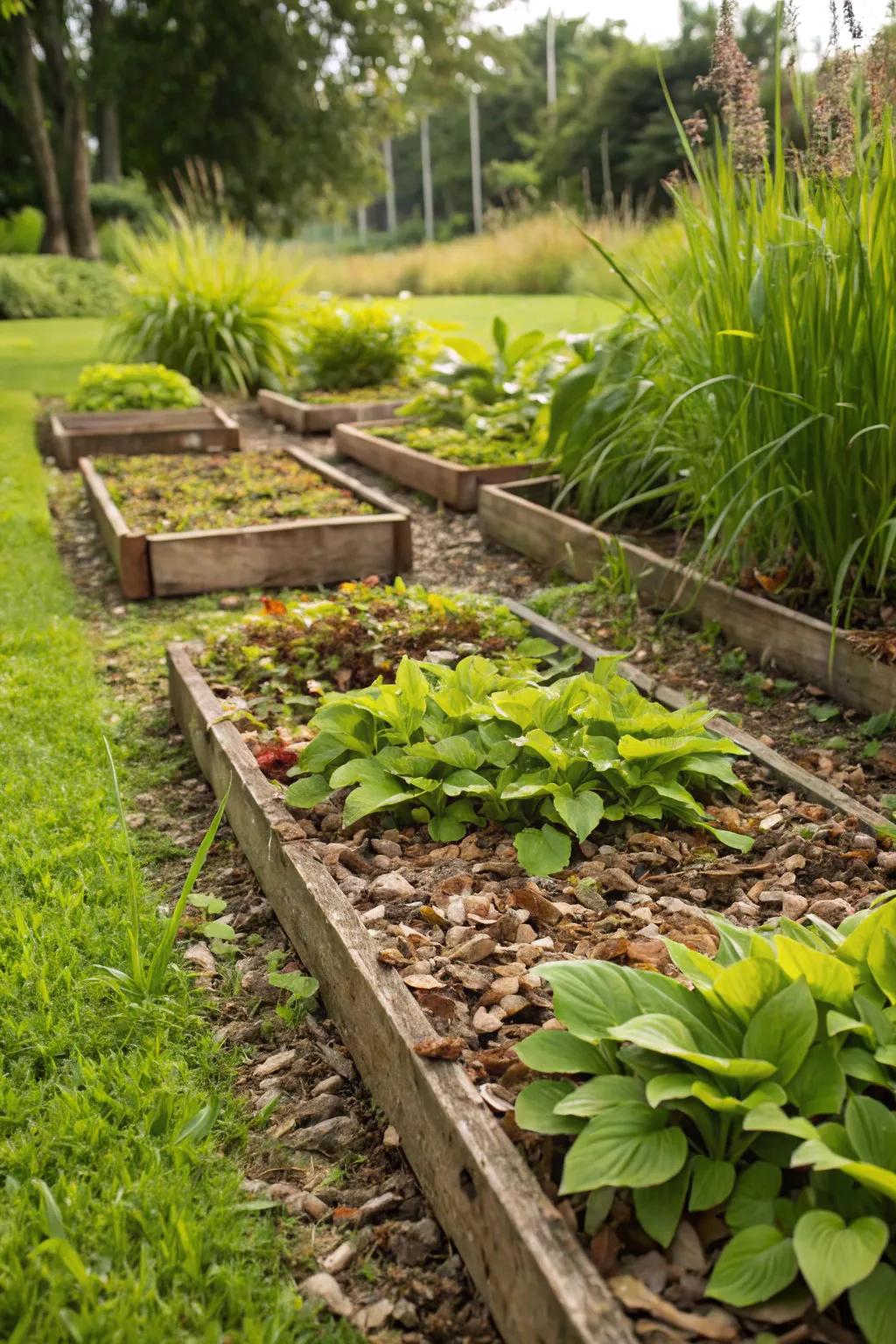
Shredded leaves are a fantastic and free option if you have trees nearby. They work wonders in my garden by adding nutrients as they decompose.
Useful items to consider:
- Garden Leaf Mulcher: Transform leaves into nutrient-rich mulch effortlessly with this efficient garden leaf mulcher.
- Compost Bin for Leaves: Utilize fallen leaves wisely by turning them into compost with this sturdy compost bin.
- Mulching Lawn Mower: Easily collect and mulch leaves while mowing your lawn with this efficient mulching mower.
2. Cedar Mulch Charm
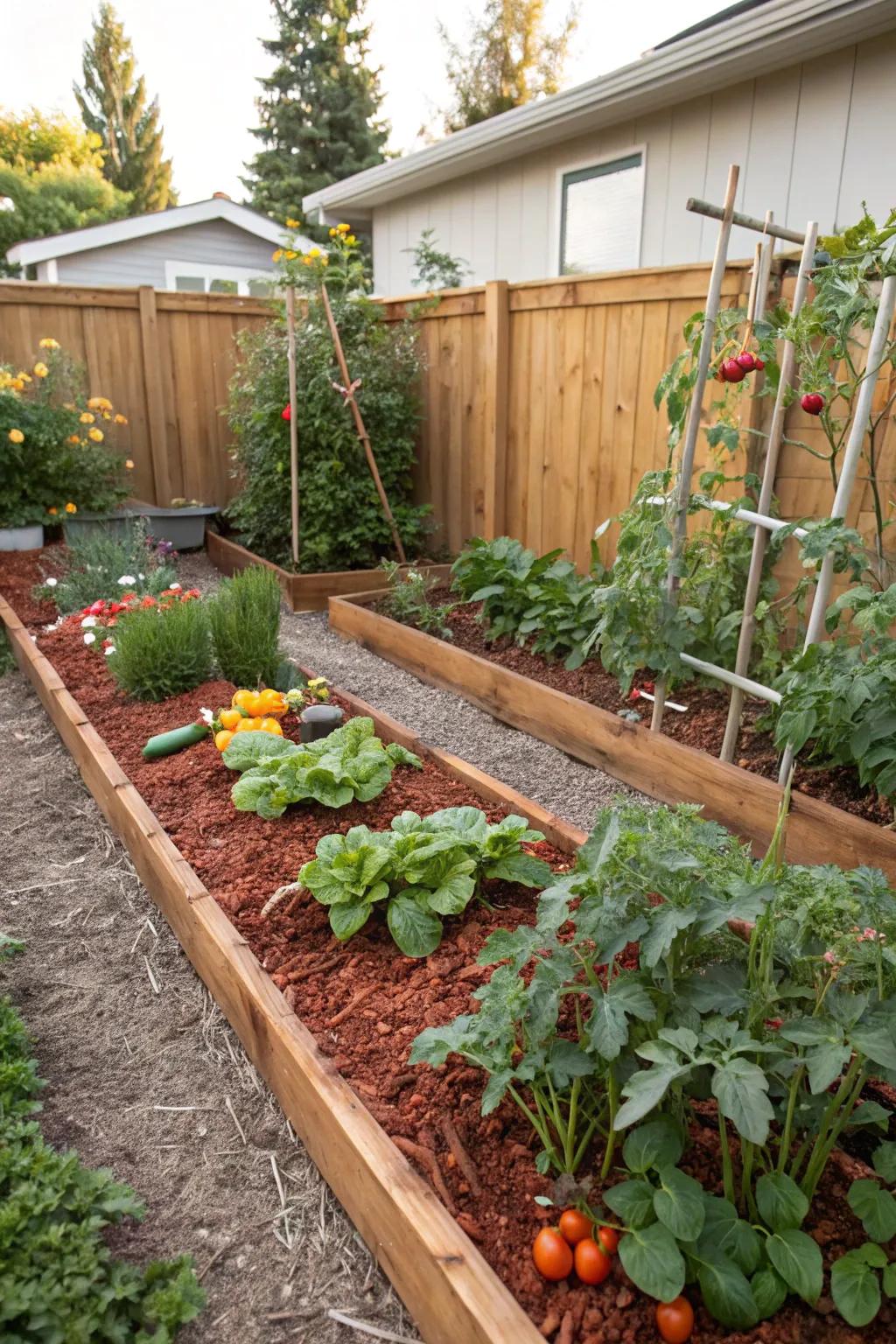
Cedar mulch not only looks beautiful but also repels insects. It’s perfect for keeping those pesky bugs away from your veggies.
Some ideas to consider:
- Organic Cedar Mulch Chips: Enhance your garden’s beauty and repel insects with these fragrant cedar mulch chips.
- Natural Cedar Mulch Bags: Keep your veggies pest-free and your garden looking fabulous with natural cedar mulch bags.
- Aromatic Cedar Wood Mulch: Use aromatic cedar wood mulch to boost garden health and deter unwanted pests naturally.
3. Grass Clippings Galore

Got a lawn? Use those grass clippings! They’re one of my favorites for quick application and soil nourishment.
A few things you might like:
- Lawn Mower with Grass Catcher: Efficiently collect grass clippings for your garden mulch with a lawn mower featuring a catcher.
- Compost Bin for Grass Clippings: Turn your grass clippings into rich compost with an easy-to-use compost bin for gardens.
- Organic Lawn Fertilizer: Boost your soil’s health by using organic lawn fertilizer alongside your grass clippings mulch.
4. Straw Mulch Magic
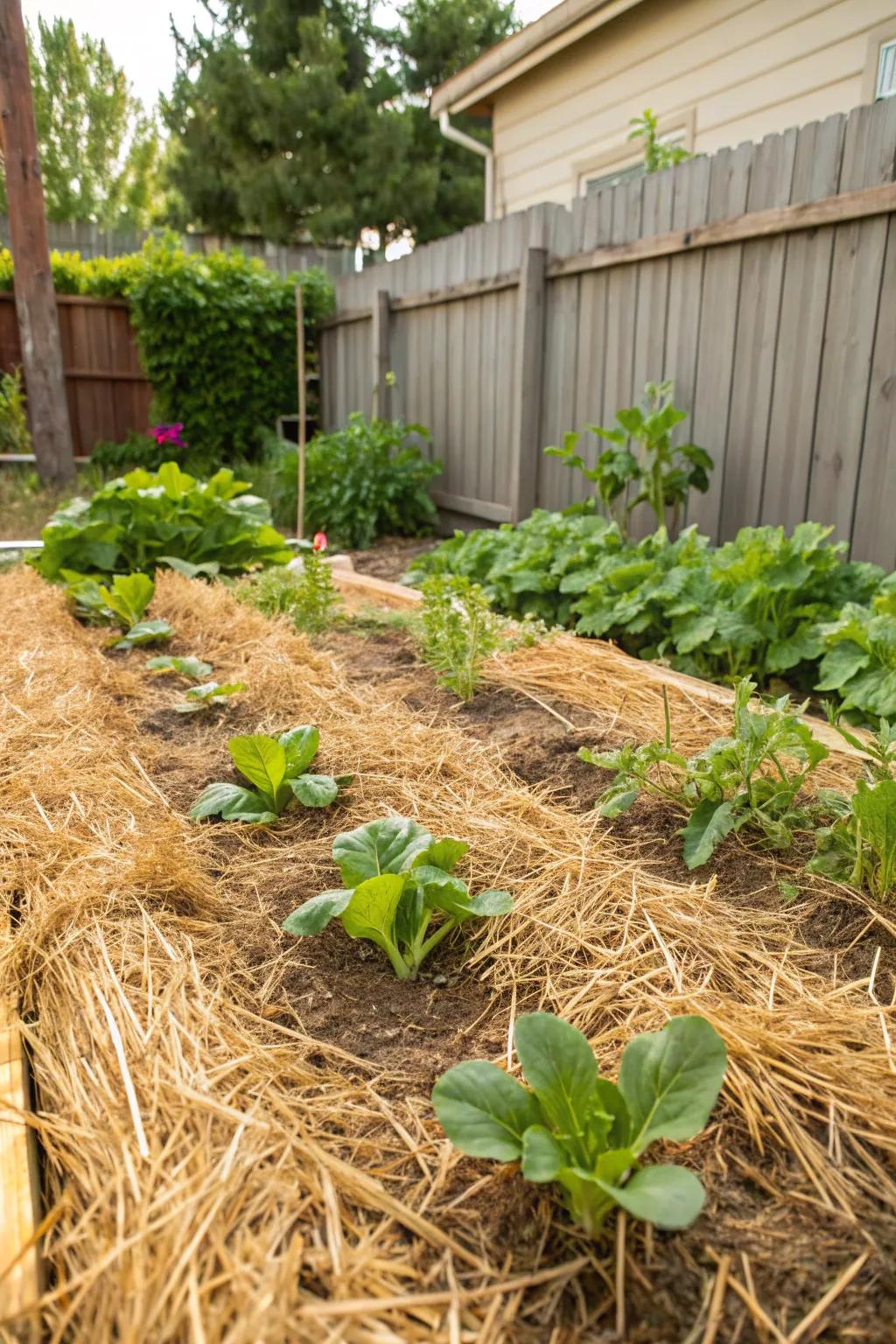
Looking for something lightweight and effective? Straw mulch is your go-to. I love how it covers large areas without weighing down tender seedlings.
Check these products out:
- Bale of Wheat Straw Mulch: Enhance your garden with lightweight, effective straw mulch for optimal seedling protection and growth.
- Organic Straw Mulch for Vegetable Gardens: Protect your plants naturally with organic straw mulch, perfect for a thriving vegetable garden.
- Compostable Straw Garden Mulch: Choose compostable straw mulch for an eco-friendly way to nurture your garden efficiently.
5. Wool Mulch Warmth
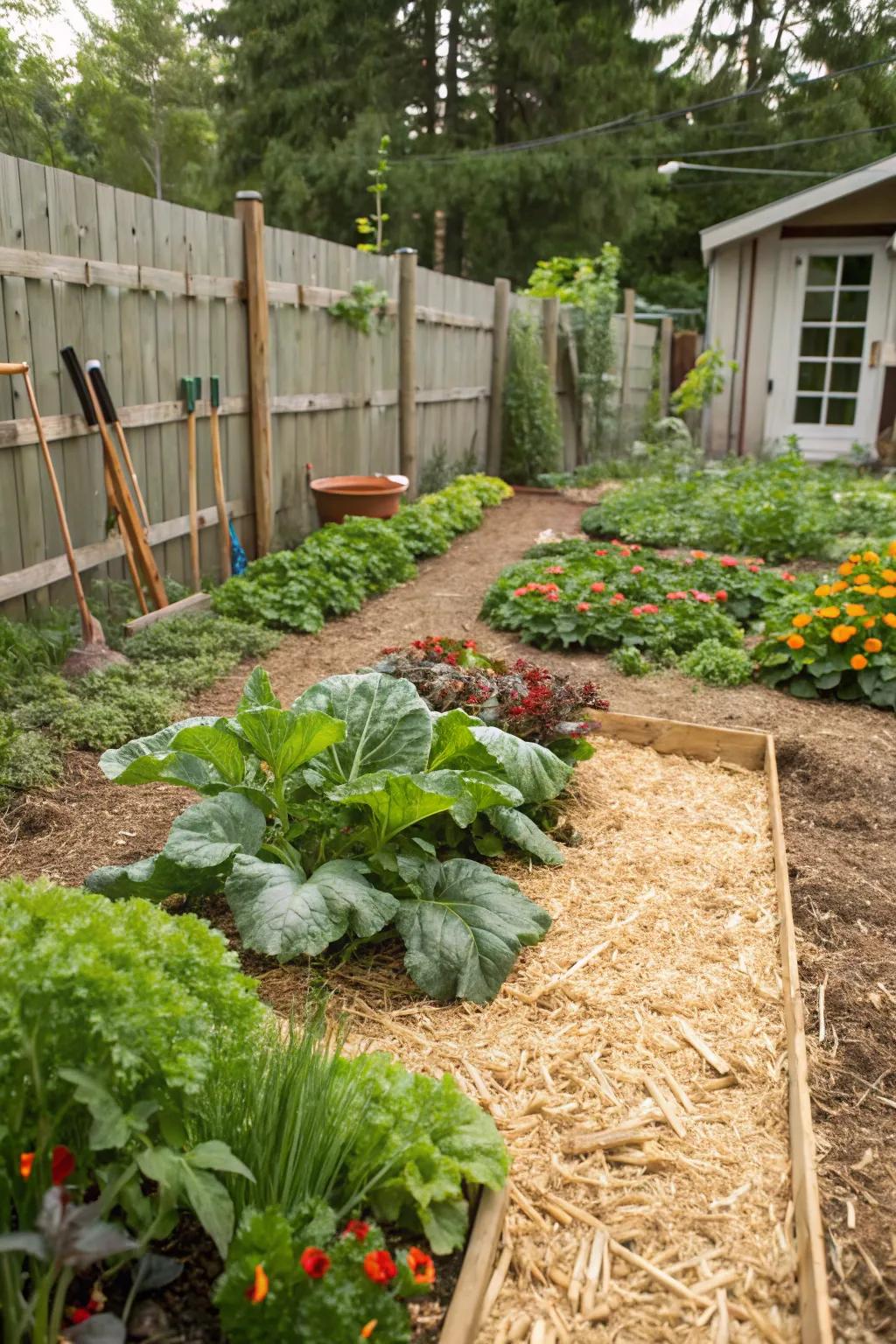
For a truly unique option, use wool mulch. It provides warmth to the soil and is a fantastic addition in cooler climates.
Consider these options:
- Wool Garden Mulch: Wrap your garden with warmth and sustainability using wool mulch for cooler climates.
- Organic Wool Mulch Sheet: Keep your soil cozy and healthy with organic wool mulch sheets designed for cold weather.
- Natural Wool Mulch Pads: Enhance warmth and moisture retention in your garden with natural wool mulch pads.
6. Pine Needle Pathways
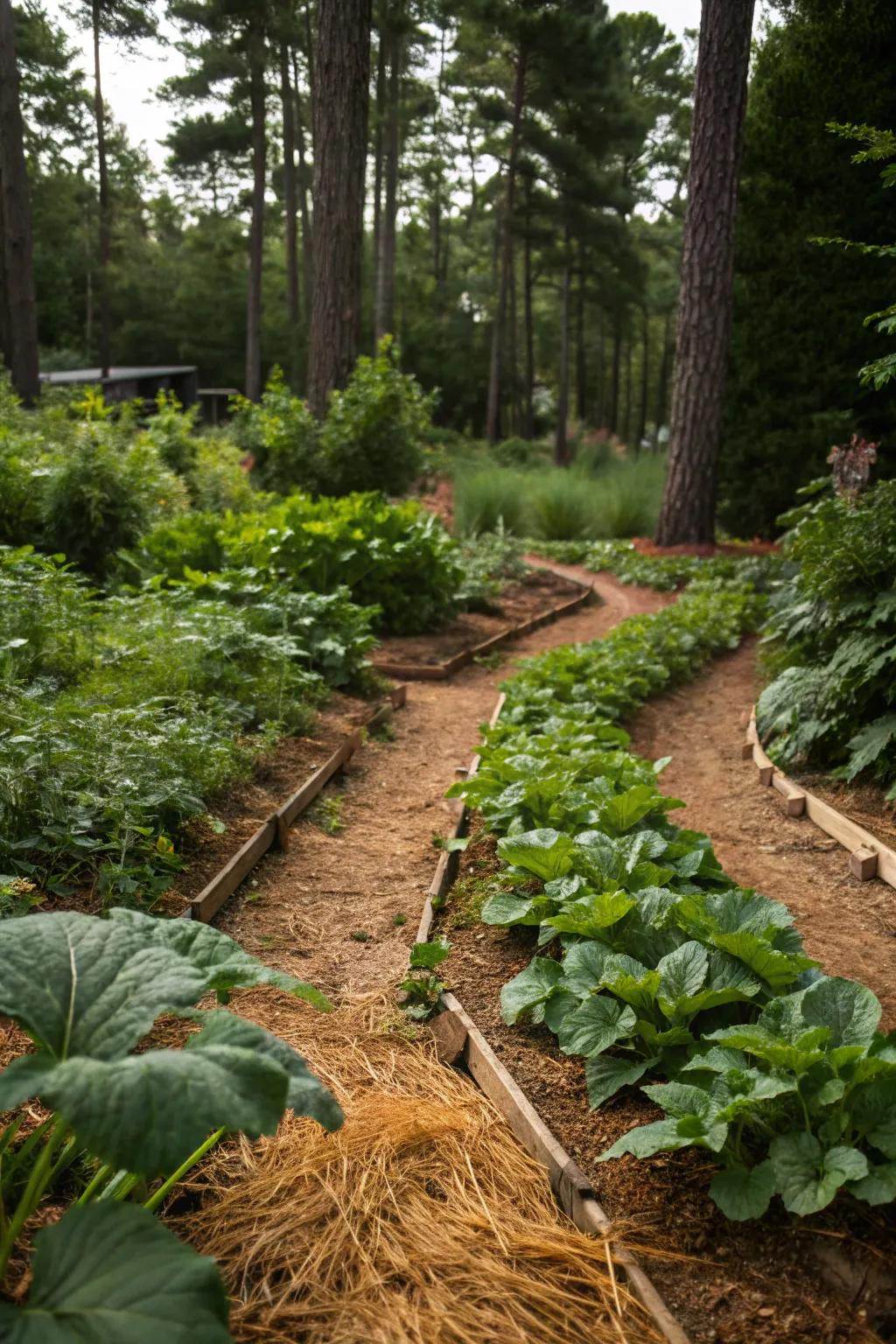
If you have pine trees, pine needles can be a great mulch option. They’re perfect for acid-loving plants and look lovely in my garden paths.
Possibly handy products:
- Natural Pine Needle Mulch: Enhance soil acidity and aesthetics in your garden with this natural pine needle mulch.
- Garden Path Edging Roll: Define your pathways elegantly with durable garden path edging, perfect for pine needle paths.
- Heavy-Duty Garden Gloves: Protect your hands while spreading mulch with these comfortable, heavy-duty garden gloves.
7. Newspaper Layers
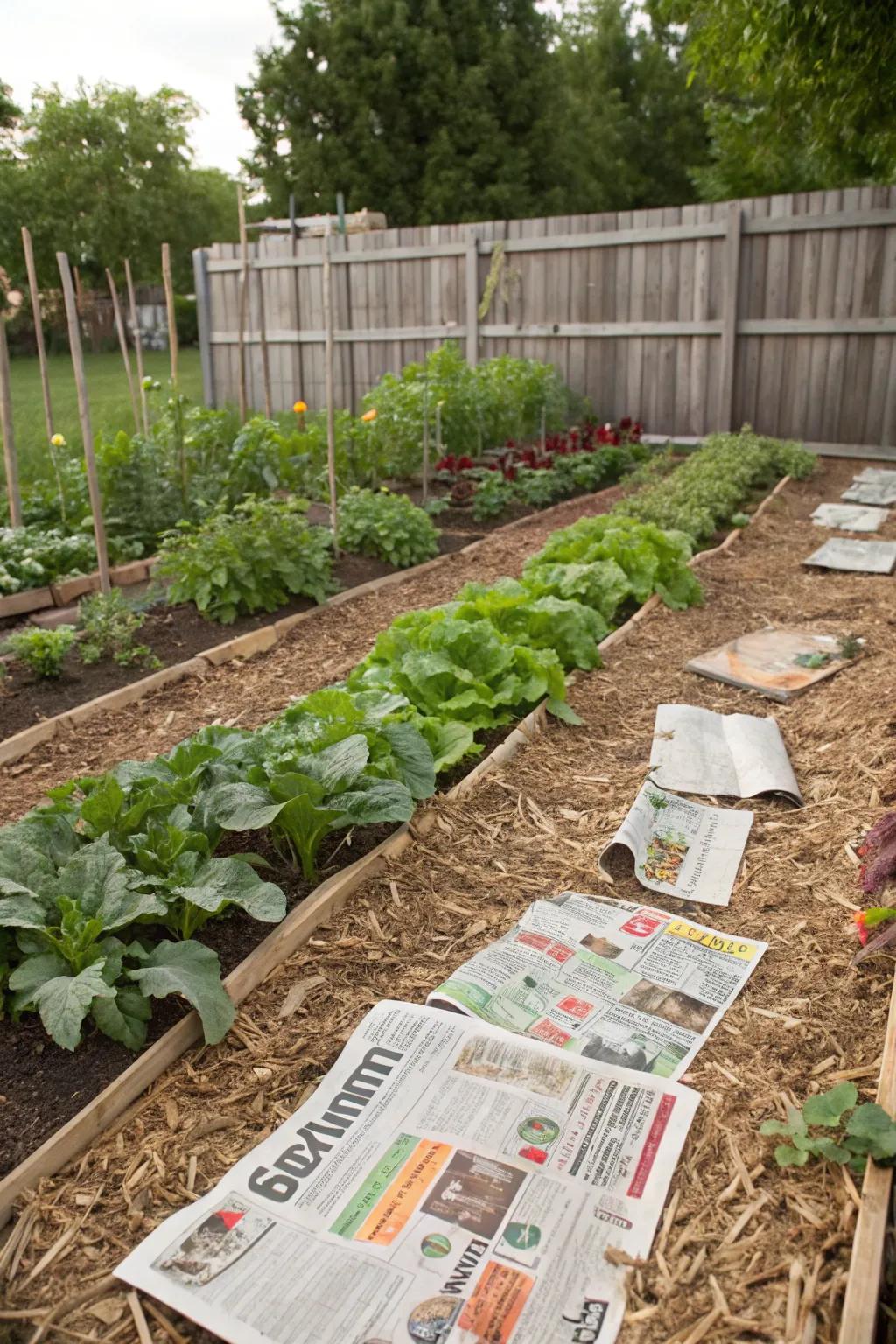
For a budget-friendly option, newspaper mulch is surprisingly effective against weeds. Just make sure to cover it with a prettier layer!
You might like:
- Organic Mulch: Cover newspapers with organic mulch to enhance garden aesthetics and retain soil moisture.
- Garden Edging: Enhance your vegetable garden with easy-to-install edging for a tidy appearance.
- Natural Weed Barrier Fabric: Use a weed barrier fabric to prevent weeds and protect your newspaper layers.
8. Bark Mulch Beauty
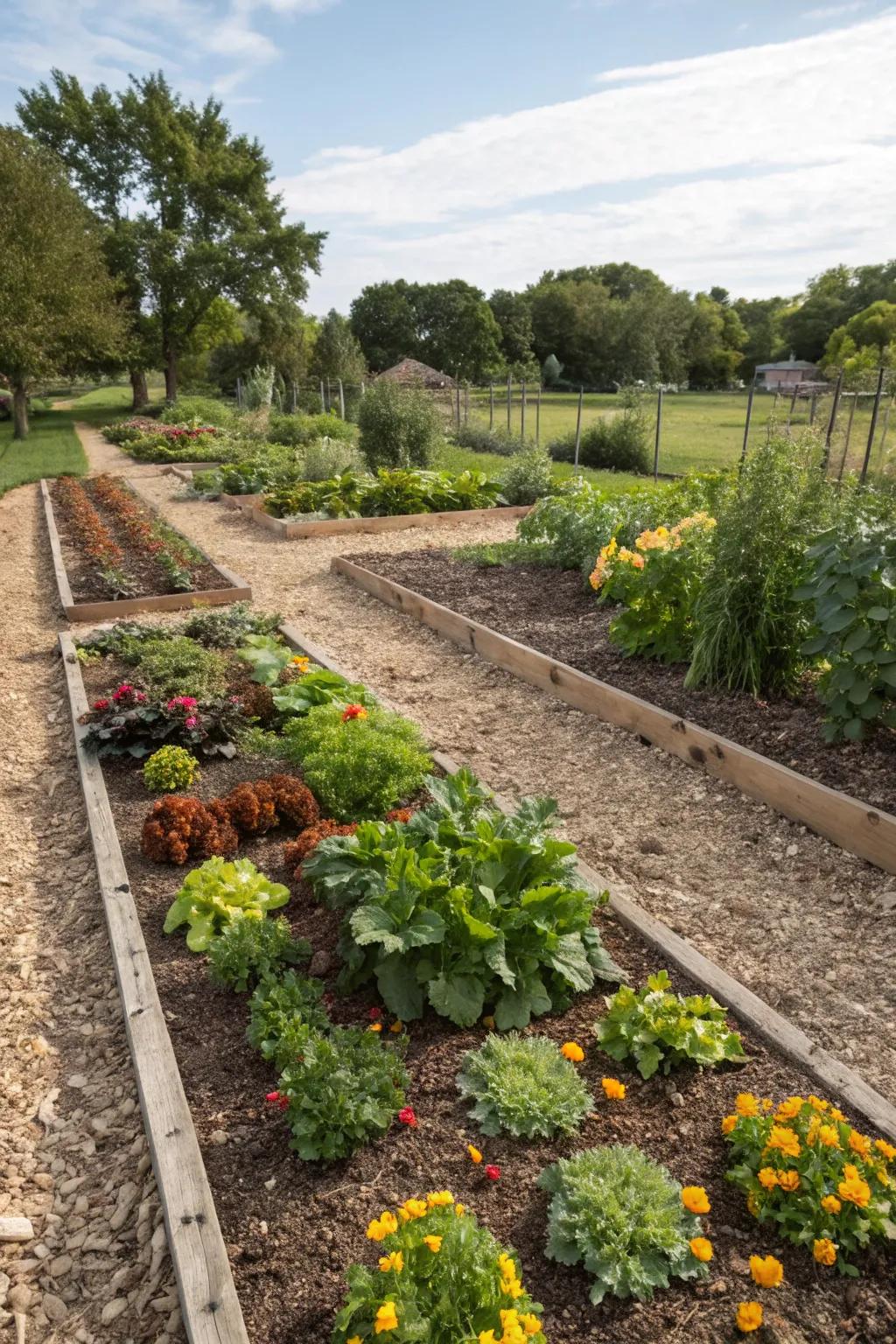
For a decorative touch, bark mulch is fantastic around perennial beds and offers a long-lasting finish. Plus, it smells great!
A few helpful options:
- Organic Bark Mulch: Enhance your garden’s aesthetic with organic bark mulch for a tidy, natural finish.
- Decorative Garden Bark Chips: Upgrade your garden beds with decorative bark chips, providing texture and visual appeal.
- Aromatic Cedar Mulch: Enjoy the fresh scent of cedar mulch while beautifying and protecting your vegetable beds.
9. Hay Bale Magic
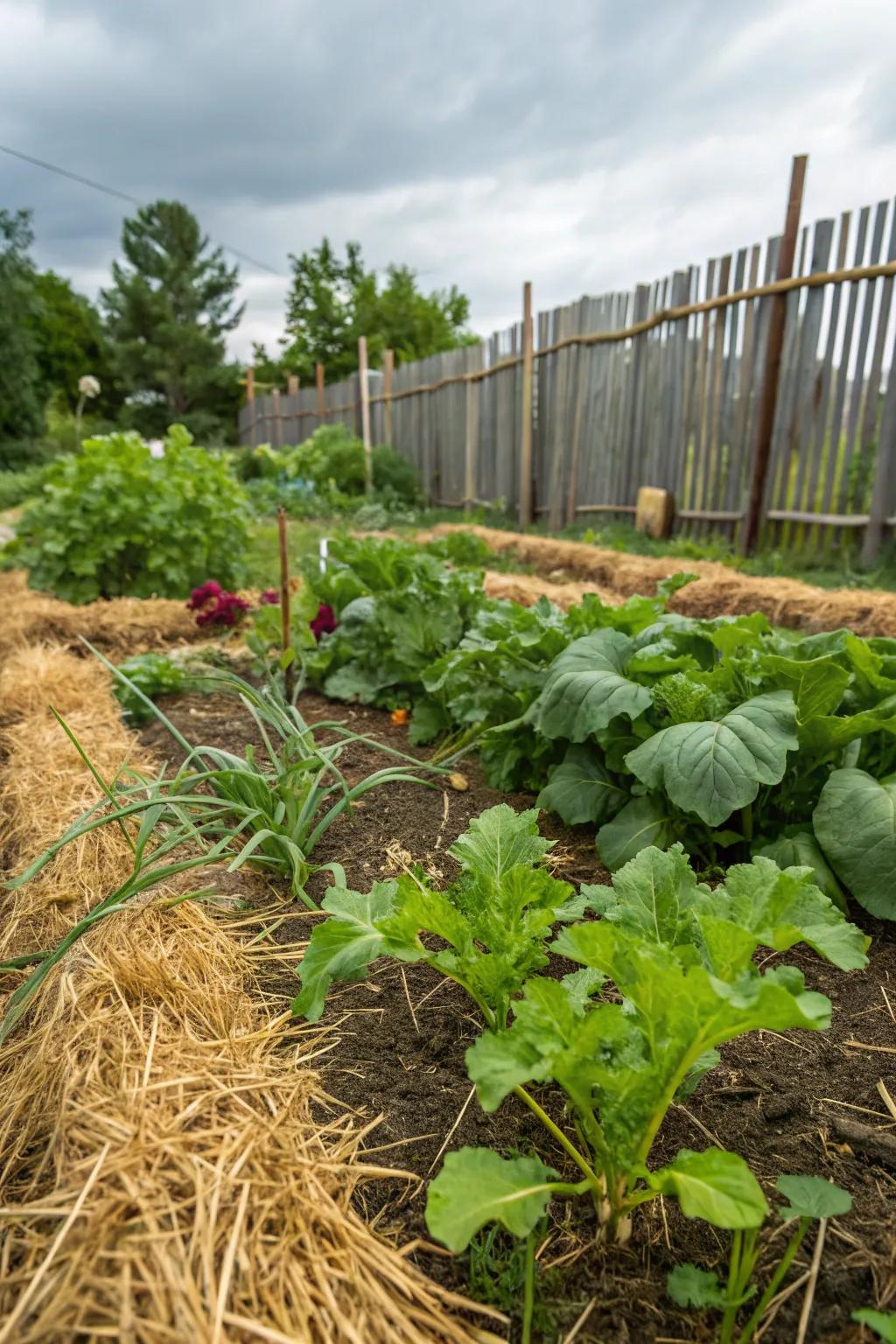
If you can find untreated hay, it offers excellent coverage and breaks down to enrich the soil. Just watch out for seeds!
Explore these options:
- Organic Hay Bales: Enhance your garden with organic hay bales, ideal for moisture retention and soil enrichment.
- Garden Mulching Hay: Discover garden mulching hay for effective coverage and weed prevention without chemical treatments.
- Natural Straw Mulch: Protect your plants with natural straw mulch that breaks down gently, enriching your soil naturally.
10. Living Mulch with Cover Crops
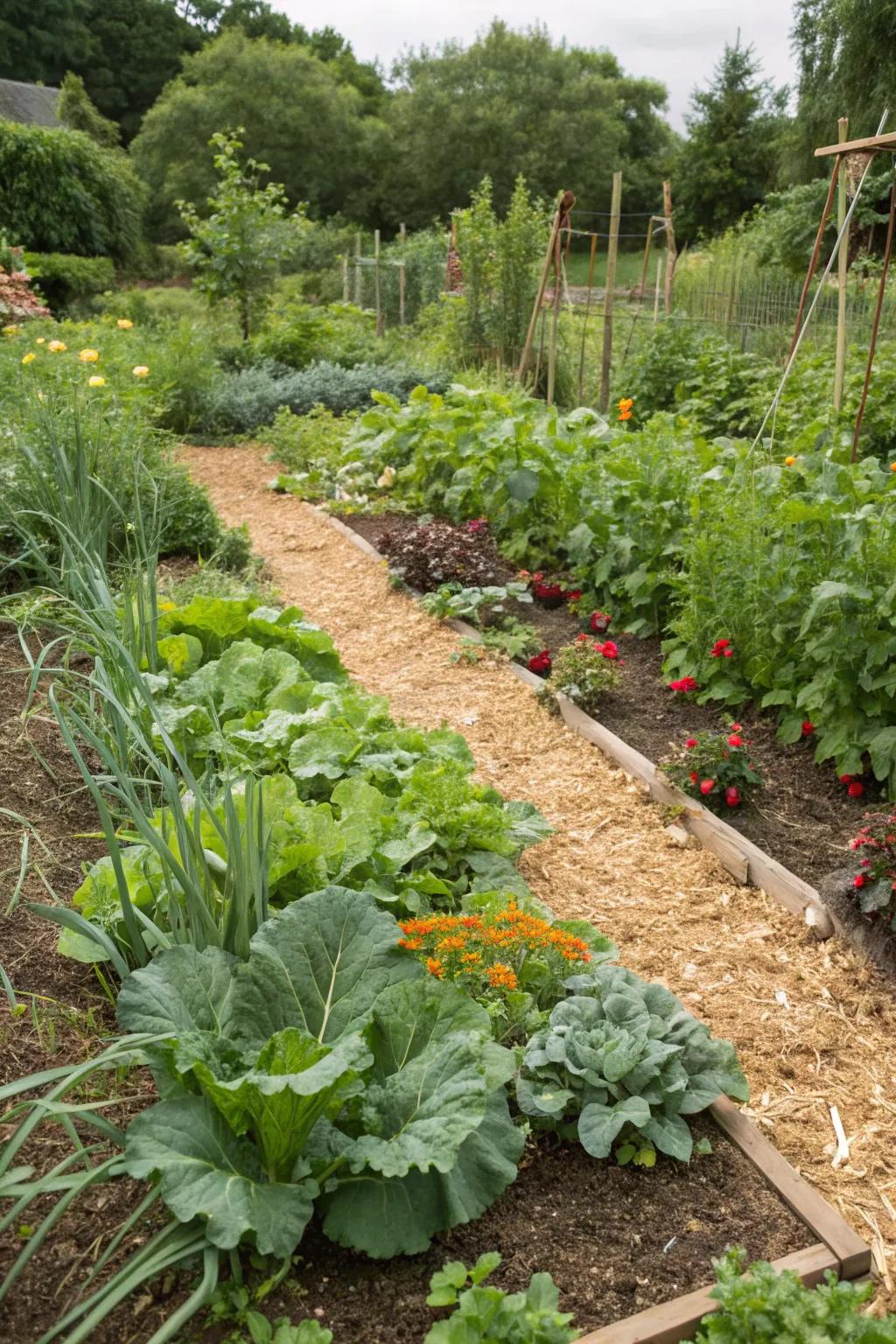
Try planting cover crops as a living mulch. They improve soil health and are a great way to fill garden gaps.
Try these:
- Cover Crop Seed Mix: Enhance soil vitality and suppress weeds by planting this diverse cover crop seed mix.
- Legume Cover Crop Seeds: Boost nitrogen levels and enrich your garden soil with these effective legume cover crops.
- Organic Mulch Fertilizer: Nourish your cover crops with this all-natural organic mulch fertilizer for thriving garden growth.
11. Seaweed Surprise
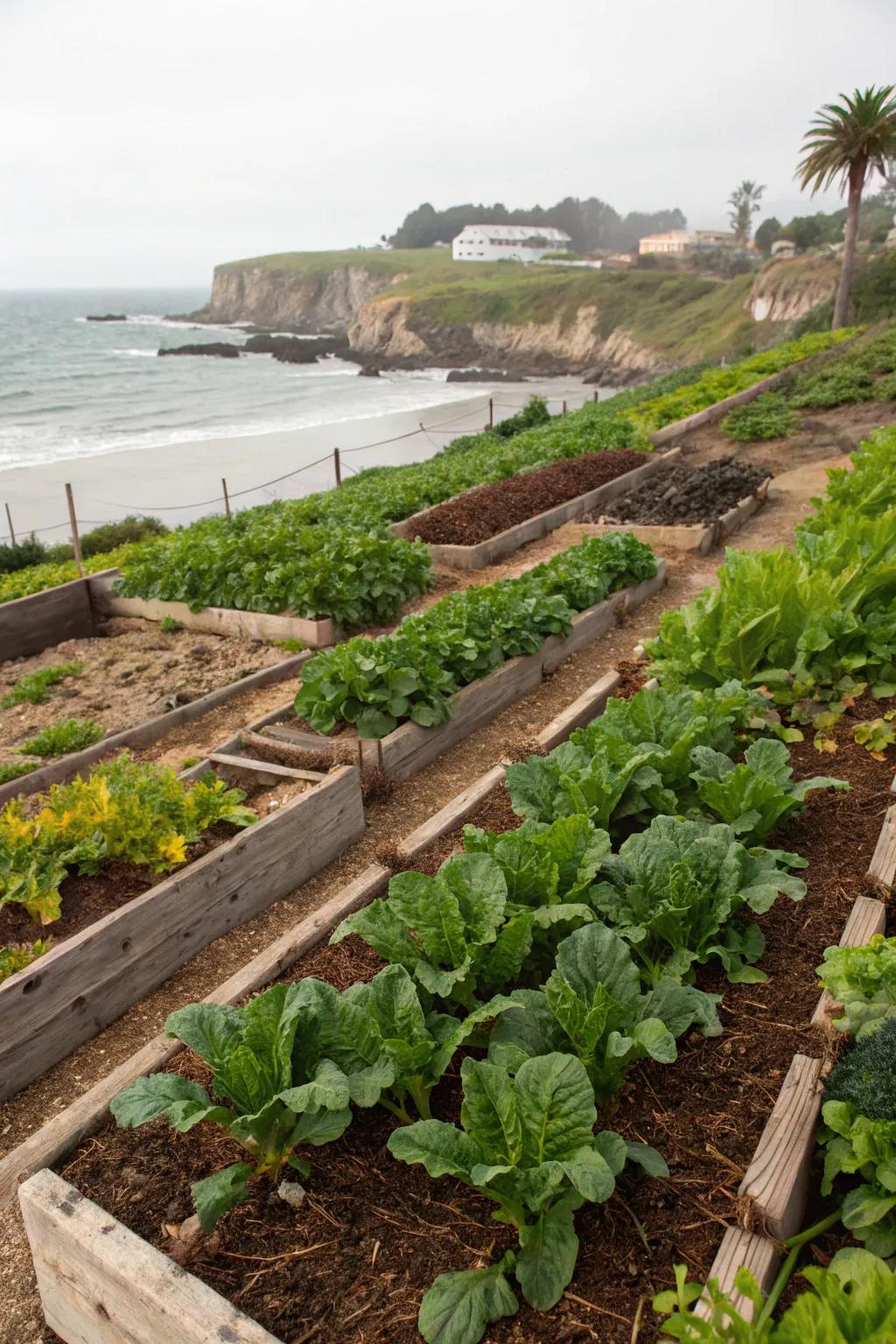
Living near the coast? Seaweed is a unique and nutrient-rich mulch that I love using when I can get my hands on it.
Items that may come in handy:
- Dried Seaweed Mulch: Enhance your garden’s health with nutrient-rich dried seaweed mulch for vibrant plant growth.
- Seaweed Fertilizer: Boost your soil’s nutrients naturally with easy-to-use seaweed fertilizer for thriving vegetables.
- Compostable Garden Bags: Collect and transport seaweed easily using sturdy, eco-friendly compostable garden bags.
12. Cocoa Bean Mulch
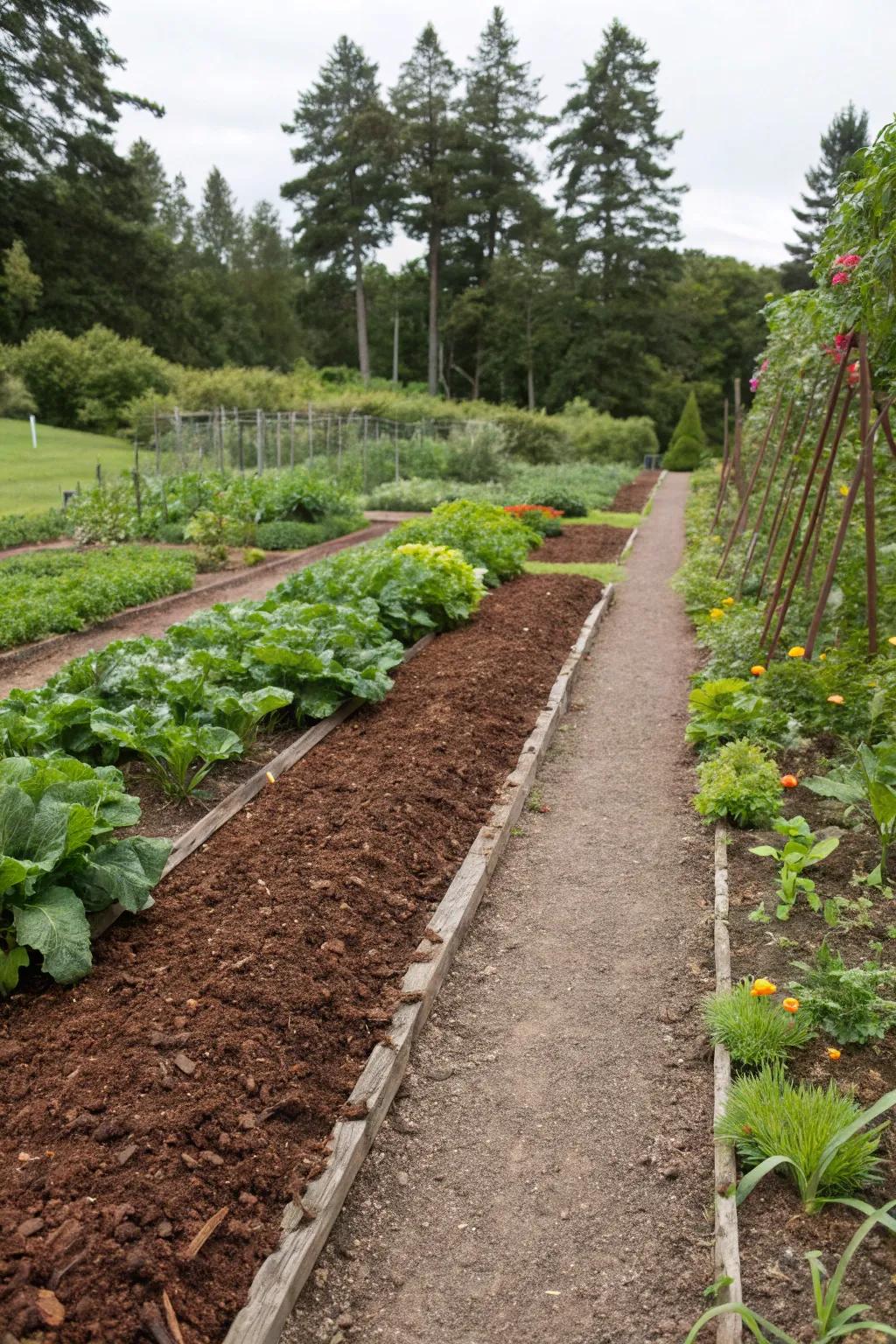
For a treat both for your garden and your nose, try cocoa bean mulch. It smells amazing and keeps my garden looking neat and tidy.
A few suggestions:
- Organic Cocoa Bean Shell Mulch: Enhance your garden’s aroma and appearance with organic cocoa bean shell mulch, naturally fragrant and tidy.
- Natural Mulching Cocoa Shells: Try natural mulching cocoa shells to keep your garden neat with a delightful chocolate scent.
- Fragrant Cocoa Husks for Gardens: Transform your garden with fragrant cocoa husks, offering both beauty and an inviting smell.
13. Cardboard Cover
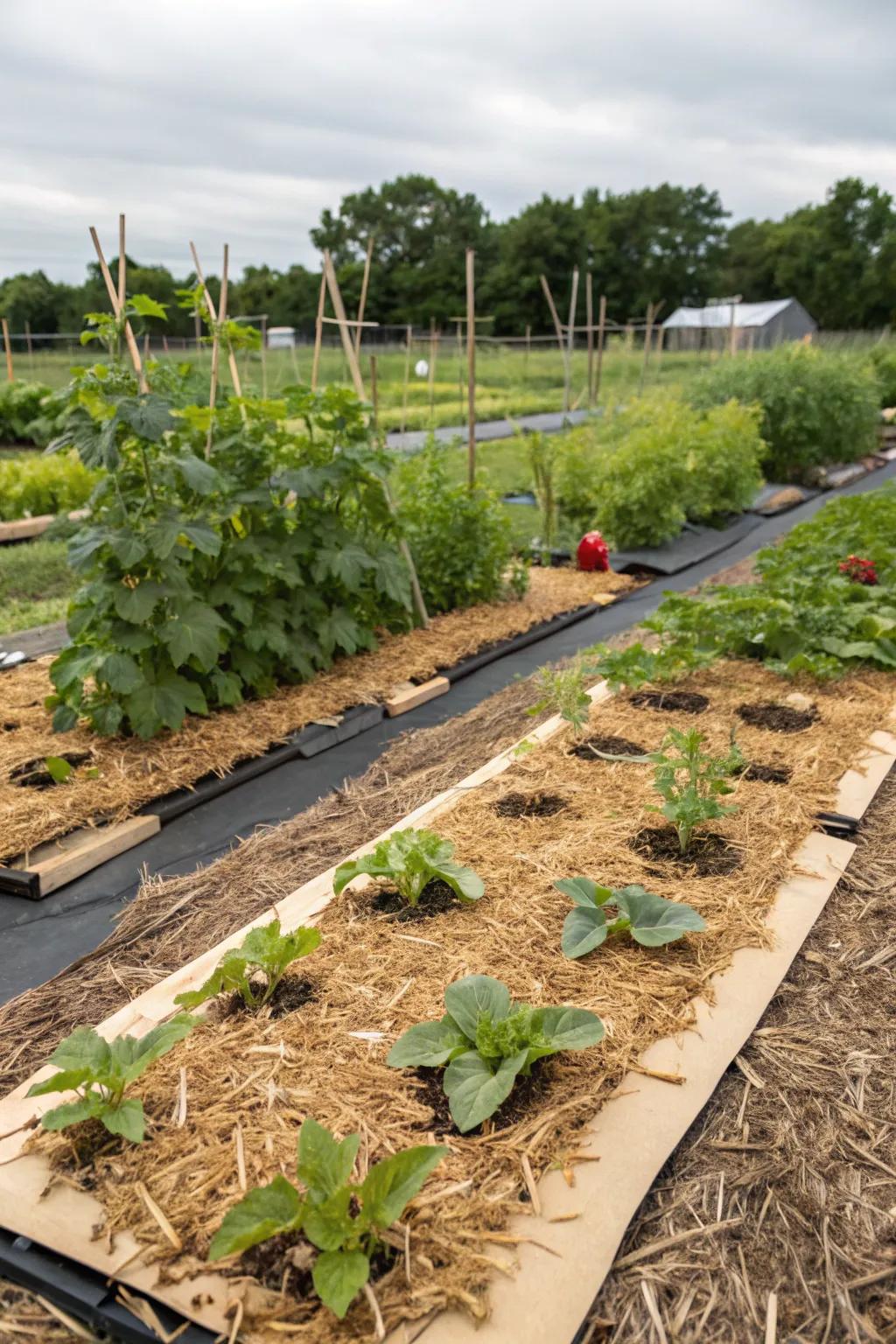
Lay down some cardboard under your mulch to suppress weeds. It’s a simple but super effective trick I’ve used for years.
Possibly helpful picks:
- Recycled Cardboard Sheets: Use these recycled cardboard sheets to effectively suppress weeds in your vegetable garden.
- Biodegradable Mulch Roll: Opt for a biodegradable mulch roll to enhance moisture retention and reduce garden weeds efficiently.
- Garden Mulching Fabric: Lay down garden mulching fabric for excellent weed control and a healthier vegetable garden.
14. Pea Gravel Paths
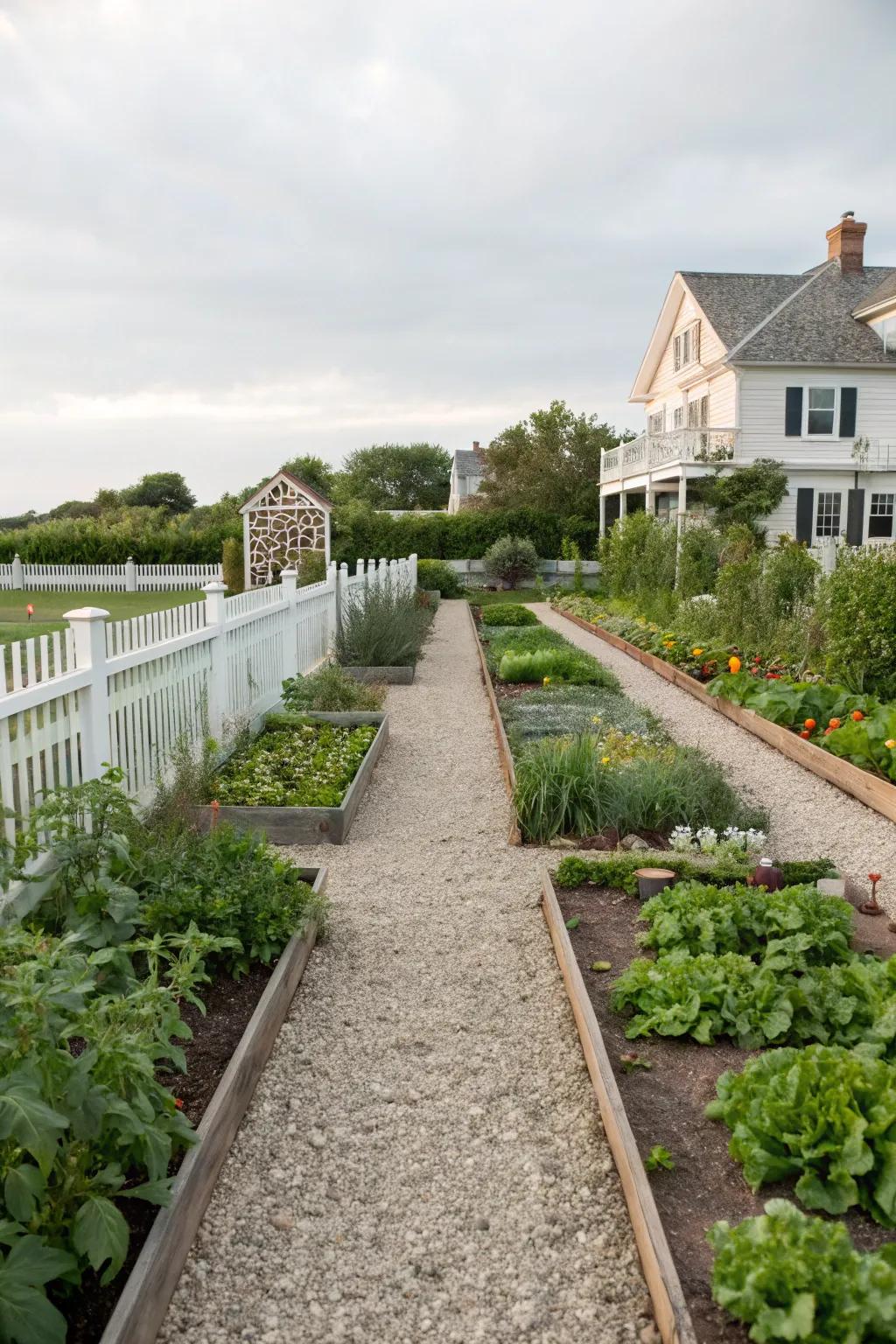
Consider pea gravel for paths between your vegetable beds. It provides excellent drainage and a clean, modern look.
These products might be useful:
- Decorative Pea Gravel Stones: Enhance your garden’s pathways with pea gravel for a polished, well-drained appearance.
- Garden Edging Tools and Kits: Ensure a neat and defined edge for your gravel paths with easy-to-use edging tools.
- Landscape Fabric for Under Gravel: Use quality landscape fabric to prevent weed growth beneath your gravel pathways.
15. Wood Chip Wonders
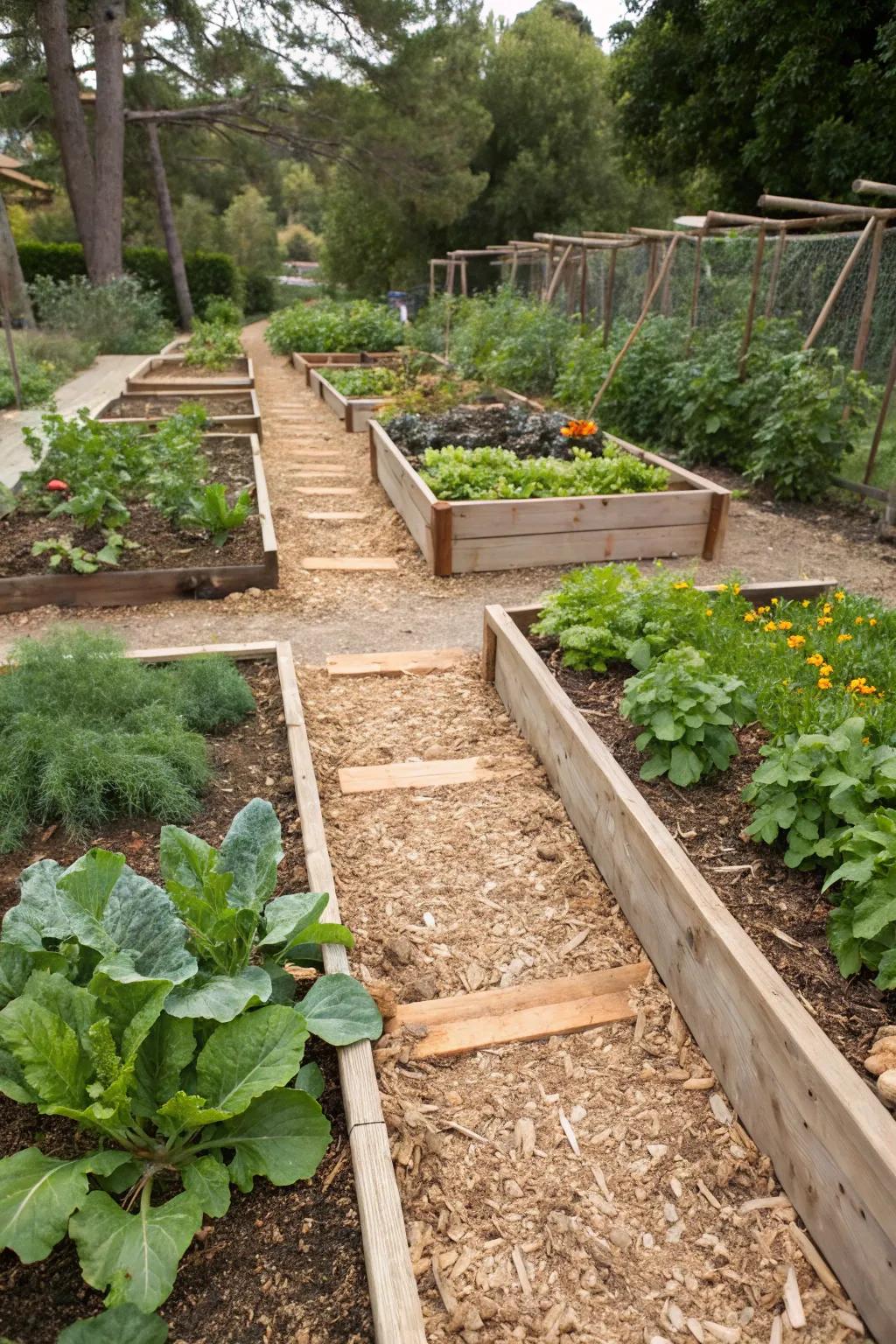
For a sturdy mulch, try wood chips. They’re great for pathways and around larger plants, offering a neat and tidy look.
Maybe worth checking out:
- Natural Wood Chips for Gardens: Enhance your garden paths with these decorative wood chips, blending style and functionality seamlessly.
- Organic Mulch Wood Chips: Utilize organic mulch wood chips to sustain moisture and add aesthetic appeal to your garden.
- Cedar Wood Chips Mulch: Choose cedar wood chips for natural insect repellant properties and a long-lasting garden finish.
16. Rubber Mulch Reality
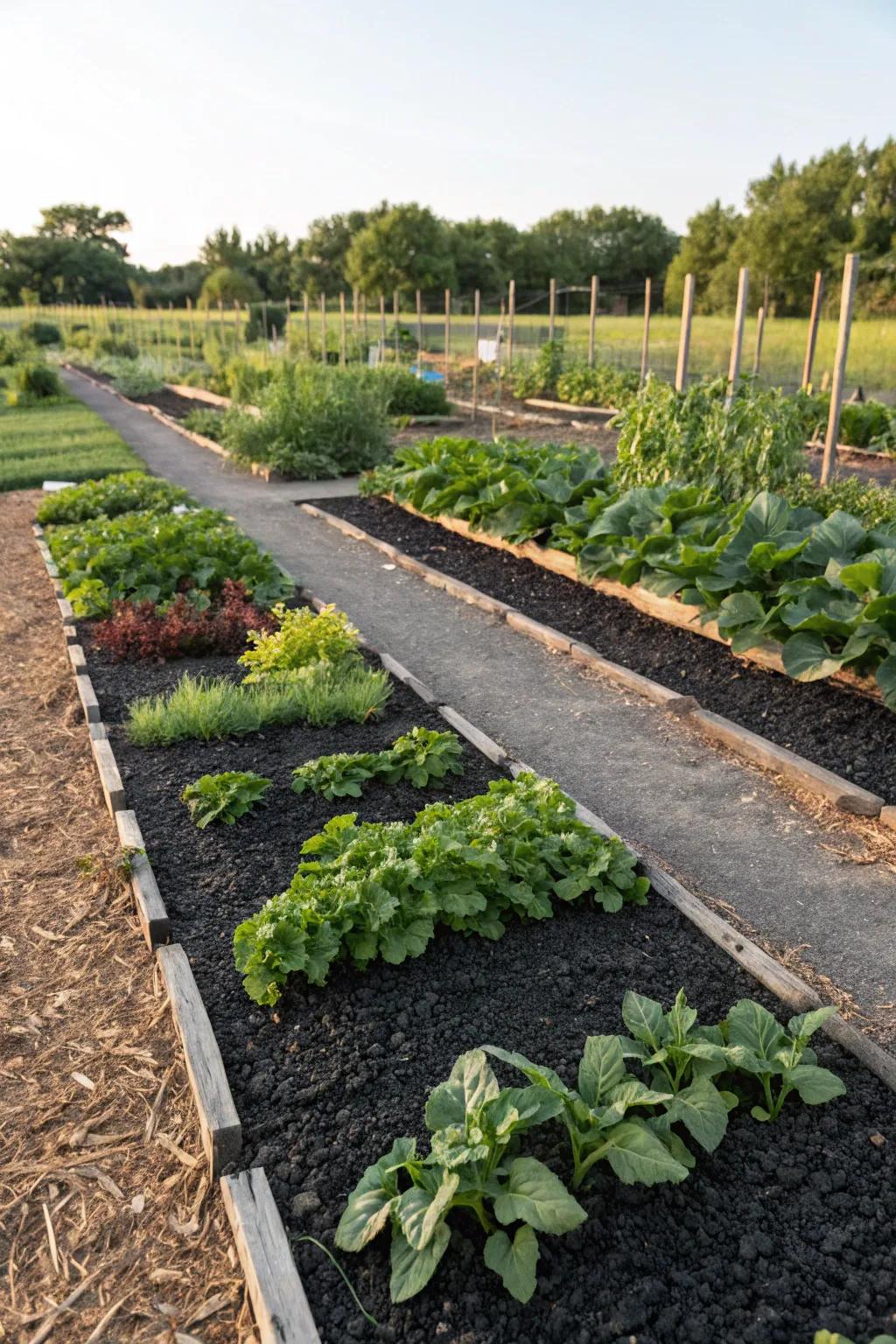
For a sustainable and long-lasting solution, rubber mulch can be a great choice for paths and non-food areas.
These products might help:
- Recycled Rubber Mulch for Landscaping: Enhance garden paths with durable, eco-friendly rubber mulch. Perfect for low-maintenance landscaping.
- Rubber Mulch Border Edging: Define garden areas effortlessly with flexible rubber mulch edging. Easy to install for clean lines.
- Rubber Pathway Mulch: Create long-lasting garden paths with slip-resistant rubber mulch, ideal for high-traffic areas.
17. Compost Blanket

Using compost as mulch is like giving your garden a nutrient-packed blanket. It’s a bit like a spa day for your soil!
Give these a look:
- Organic Compost: Nourish your garden with rich, organic compost. Enhance growth and soil health naturally.
- Compost Spreader: Easily distribute compost across your garden beds for consistent nutrient coverage.
- Compost Bin: Create your own compost from kitchen scraps with an easy-to-use compost bin.
